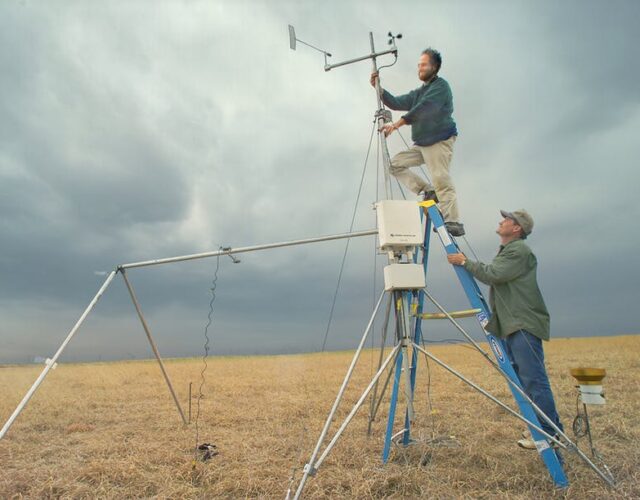In 2005 an article in Conservation Biology caused Deb Niemeier to reevaluate the goals of her research. Until that time the professor of civil and environmental engineering at the University of California, Davis, had presented her research through the typical academic channels: she had attended conferences, published articles in academic journals, and discussed her work mainly with other researchers. But her research rarely found a more public audience. A chord was struck in Niemeier when she read of the journal author’s regret in having wasted so much of his career talking to other scientists instead of engaging the public at large.
Niemeier realized that her research wouldn’t change things unless “soccer moms or downtown business groups” understood the dangers of climate change. She now gives talks around the country as a way of connecting the public to science.
“We have a population who feels fairly disconnected from science, right?” she says in her oral-history interview.
Niemeier is not alone. Many atmospheric scientists are realizing the importance of engaging laypeople with the facts of climate change and are still trying to learn how best to do so.
Kenneth Davis is a professor of meteorology at Pennsylvania State University. Davis believes the public does not understand the full extent of the danger posed by climate change. Much of Davis’s research is focused on the terrestrial carbon sink in North America. For millions of years plants and microscopic animals absorbed a little more carbon than they released, and much of that stored carbon was transformed into gas, oil, and coal. Now humans are releasing far more carbon in the form of heat-trapping carbon dioxide than can be reabsorbed by the lands and oceans. The importance of the terrestrial sink to our environmental well-being is something most people don’t appreciate, Davis believes. “It just is really not very much on the public register,” he says.
Davis has also found that many weather forecasters he meets are not especially concerned by climate change either. Many of his students are studying to be meteorologists, and Davis is now working to reform his department’s curriculum to include climate as well as weather. “If they go off to be a weather forecaster, they [will] have at least a decent understanding of what’s the science to date,” he says. “They can’t avoid it, even if they want to.”
As part of his air-monitoring project Ronald Cohen, a professor at the University of California, Berkeley, is working with grade-school teachers to create science lessons built around climate data. In one exercise Cohen gives students portable carbon dioxide detectors before closing the classroom’s windows and doors. The students see how much carbon dioxide humans create just by breathing. “In most places the concentrations get scary high,” Cohen says. The burning of fossil fuels threatens the environment in ways that human respiration does not, but through this simple exercise students see abstract data made real.
In another experiment devised by Cohen students put sensors in a trash bag filled with food waste. “They can watch the rotting of the food waste and the incredible [amount of] CO2 that’s produced by organisms decomposing food,” Cohen says. “They can get a real sense of what it means to have a landfill.”
Reaching the public is not always easy. Talking to groups of people who actively deny climate change proved very difficult for Niemeier. “The way in which science has been attacked in this particular issue has delegitimized science in many other segments,” she says. In response Niemeier has studied the predominant myths surrounding climate change to prepare herself for disbelieving audiences.
Public knowledge is a necessary step toward addressing climate change but on its own is not enough. These atmospheric scientists understand that major social reforms are needed for lasting change. Cohen cites the unorthodox “smart city” proposals of Streetline, a company promoting a system of sensors and signs that tells drivers the location of vacant parking spaces. Several American universities have adopted Streetline systems. “The claim [Streetline] made was that half the carbon dioxide emissions in downtown San Francisco were from people circling for a spot,” Cohen remembers. Cohen also brings up the possibility of “sequestering” carbon dioxide deep underground in saline aquifers. The process involves gathering carbon dioxide directly from power plants, pressurizing it, and injecting it into saltwater-filled rock.
Davis wants to stop debating whether there is a problem and start talking about solutions. “Let’s move the discussion . . . from ‘Is this really a problem, are we really responsible?’ to ‘What should we do about it?’”
The three atmospheric scientists featured here were interviewed by our Oral History staff as part of Sensing Change, an exhibition that explores the effects of environmental change.




